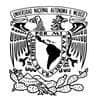Factores estresantes en lechones destetados comercialmente
Hoy en día, las modernas técnicas de producción porcina exigen cada vez más destetes tempranos. Sin embrago, el destete representa una de las etapas más críticas en la vida productiva del cerdo, debido a que durante ella se suman una serie de factores estresantes y cambios fisiológicos. En la presente revisión se analizan los factores más importantes que causan estrés durante esta etapa, como la separación de la cerda, el transporte, el cambio de alimento, el alojamiento en nuevas instalaciones y el agrupamiento con lechones extraños. La interacción de los lechones con estos factores estresantes incrementa el nivel de estrés que representa, per se, la separación de la cerda y el lechón durante el destete, ya que habitualmente originan "retraso en el crecimiento", además de aumento de la susceptibilidad frente a agentes patógenos entéricos causantes de enfermedades. Por ello, los distintos factores que afectan la fisiología, el metabolismo y el comportamiento del lechón deben ser controlados adecuadamente. Se concluye que el conocimiento de la biología de la especie y un entrenamiento adecuado del personal, son necesarios para disminuir los problemas de bienestar del lechón destetado, por lo que, con el fin de evitarlos, se recomiendan algunas prácticas derivadas de los hallazgos presentados.
Palabras clave: lechón, bienestar animal, separación madre-cría.
Nowadays, modern swine production techniques promote early weaning. Weaning constitutes one of the most critical stages in the productive life of swine as it is a phase that entails a whole series of stressful factors and physiological changes. This review examines the most important factors that cause stress during this stage, including: separation from the sow, transport, changes in alimentation, lodging in different installations, and being grouped together with strange piglets. The interaction of young pigs with all these stressor factors exercises a cumulative effect that intensifies the level of stress they experience during separation from the sow during the weaning process itself, an event that frequently results in "delayed growth" accompanied by an increased susceptibility to disease-causing, enteric pathogenic agents. For these reasons, it is important to adequately control the variety of factors that affect the physiology, metabolism and behavior of piglets. The conclusion is that both knowledge of the biology of the species and suitable personnel training are necessary to reduce the problems that arise from these issues related to the welfare of weaned piglets. Finally, this study recommends some practices derived from the findings presented, with a view to improving the welfare of recently weaned piglets.
Key words: piglet, animal welfare, separation of mothers from young.
1. MARTINEZ-RODRIGUEZ R, MOTA-ROJAS D, TRUJILLO-ORTEGA ME, OROZCO-GREGORIO H, HERNANDEZ-GONZALEZ R, ROLDAN-SANTIAGO P et al. Physiological response to hypoxia in piglets of different birth weight. Italian J Anim Sci 2011;10:250-253
2. MOTA-ROJAS D, MARTÍNEZ-BURNES J, VILLANUEVA-GARCIA D, ROLDAN-SANTIAGO P, TRUJILLO ORTEGA ME, OROZCO-GREGORIO H et al. Animal welfare in the newborn piglet: a review. Vet Med-Czech 2012;57:338-49.
3. MOTA-ROJAS D, OROZCO-GREGORIO H, VILLANUEVA-GARCIA D, BONILLA-JAIME H, SUAREZ-BONILLA X, HERNANDEZ-GONZALEZ R et al. Foetal and neonatal energy metabolism in pigs and humans: a review. Vet Med-Czech 2011;56:215-25.
4. MOTA-ROJAS D, OROZCO-GREGORIO H, GONZALEZ-LOZANO M, ROLDAN-SANTIAGO P, MARTINEZ-RODRIGUEZ R, SANCHEZ-HERNANDEZ M et al. Therapeutic Approaches in Animals to Reduce the Impact of Stress During Transport to the Slaughterhouse: A Review. Int J Pharmacol 2011;7:568-78.
5. OROZCO-GREGORIO H, MOTA-ROJAS D, BONILLA- JAIME H, TRUJILLO-ORTEGA ME, BECERRIL-HERRERA M, HERNANDEZ-GONZALEZ R et al. Effects of administration of caffeine on metabolic variables in neonatal pigs with peripartum asphyxia. Am J Vet Res 2010;71:1214-9.
6. ROLDAN-SANTIAGO P, GONZALEZ-LOZANO M, FLORES-PEINADO SC, CAMACHO-MORFIN D, CONCEPCION-MENDEZ M, MORFIN-LOYDEN L et al. Physiological Response and Welfare of Ducks During Slaughter. Asian J Anim Vet Adv 2011;6:1256-3.
7. MOTA-ROJAS D, VILLANUEVA-GARCÍA D, HERNÁNDEZ-GONZÁLEZ R, ROLDAN-SANTIAGO P, MARTÍNEZ-RODRÍGUEZ R, MORA-MEDINA P et al. Assessment of the vitality of the newborn: An overview. Sci Res Essays 2012;7:712-8
8. MOTA-ROJAS D, TRUJILLO-ORTEGA M, BECERRIL-HERRERA M, ROLDAN-SANTIAGO P, GONZÁLEZ-LOZANO M, GUERRERO-LEGARRETA I. Effect of the Sacrifice Method on Critical Blood Variables and Biochemistry Consequences of the Guinea Pig Meat (Cavia porcellus). Revista Científica, FCV-LUZ 2012;XXII:51-8.
9. MOTA-ROJAS D, BECERRIL-HERRERA M, ROLDAN- SANTIAGO P, ALONSO-SPILSBURY M, FLORES- PEINADO S, RAMIREZ-NECOECHEA R et al. Effects of long distance transportation and CO2 stunning on critical blood values in pigs. Meat Sci 2012;90:893-8.
10. BERRY RJ, LEWIS NJ. The effect of duration and temperature of simulated transport on the performance of early-weaned piglets. Can J Anim Sci 2001;81:199-204.
11. LEWIS NJ, BERRY RJ. Effects of season on the behaviour of early-weaned piglets during and immediately following transport. Appl Anim Behav Sci 2006;100:182-92.
12. WAMNES S, LEWIS NJ, BERRY RJ. The performance of early-weaned piglets following transport: Effect of season and weaning weight. Can J Anim Sci 2006;86:337-43.
13. WAMNES S, LEWIS NJ, BERRY RJ. The behaviour of early-weaned piglets following transport: Effect of season and weaning weight. Can J Anim Sci 2008;88:357-67.
14. PLUSKE JR, DURMIC Z, PAYNE HG, MANSFIELD J, MULLAN BP, HAMPSON DJ et al. Microbial diversity in the large intestine of pigs born and reared in different environments. Livest Sci 2007;108:113-6.
15. PARRATT CA, CHAPMAN KJ, TURNER C, JONES PH, MENDL MT, MILLER BG. The fighting behaviour of piglets mixed before and after weaning in the presence or absence of a sow. Appl Anim Behav Sci 2006;101:54-67.
16. ROLDAN-SANTIAGO P, MOTA-ROJAS D, TRUJILLO- ORTEGA ME, HERNÁNDEZ-GONZÁLEZ R, MARTÍNEZ-RODRÍGUEZ R, SÁNCHEZ- HERNÁNDEZ M. El estrés del destete en lechones de 21 días: respuestas fisiometabólicas. Acontecer Porcino 2011;106:42-8.
17. PÉREZ-PEDRAZA E, ROLDAN-SANTIAGO P, TRUJILLO-ORTEGA M, MARTÍNEZ-RODRÍGUEZ R, OROZCO-GREGORIO H, BECERRIL-HERRERA M, MOTA-ROJAS D. Factores estresante en lechones. Memorias de las 5taJornada de Estrés Animal y 5to. Curso de Bienestar Animal y Calidad de la Carne; 2012 Julio 5 y 6; Instalaciones del Centro de Enseñanza Investigacion y Extension en Produccion Porcina (CEIEPP), FMVZ. UNAM Jilotepec, Edo.Méx. 2012;15-21.
18. ROLDAN-SANTIAGO P, MARTINEZ-RODRIGUEZ R, YANEZ-PIZANA A, TRUJILLO-ORTEGA ME, PÉREZ-PEDRAZA E, SANCHEZ-HERNANDEZ M et al. Stressor factors in the transport of weaned piglets: a review. Vet Med-Czech 2013;58:241-251.
19. HYUN Y, ELLIS M, RISKOWSKI G, JOHNSON RW. Growth performance of pigs subjected to multiple concurrent environmental stressors. J Anim Sci 1998;76:721-7.
20. BRUININX E, HEETKAMP MJW, VAN DEN BOGAART A, VAN DER PEET-SCHWERING CMC, BEYNEN AC, EVERTS H et al. A prolonged photoperiod improves feed intake and energy metabolism of weanling pigs. J Anim Sci 2002;80:1736-45.
21. VAN DER MEULEN J, KOOPMANS SJ, DEKKER RA, HOOGENDOORN A. Increasing weaning age of piglets from 4 to 7 weeks reduces stress, increases post-weaning feed intake but does not improve intestinal functionality. Anim 2010;4:1653-61.
22. SORRELLS AD, EICHER SD, SCOTT KA, HARRIS MJ, PAJOR EA, LAY DC et al. Postnatal behavioral and physiological responses of piglets from gilts housed individually or in groups during gestation. J Anim Sci 2006;84:757-66.
23. PLUSKE JR, HAMPSON DJ, WILLIAMS IH. Factors influencing the structure and function of the small intestine in the weaned pig: a review. Livest Prod Sci 1997;51:215-36.
24. ROLDAN-SANTIAGO P, MOTA-ROJAS D, TRUJILLO-ORTEGA ME, MARTÍNEZ-RODRÍGUEZ R. Estresores comunes en lechones. Memorias de las XI Jornadas Universitarias de Ginecobstetricia y Perinatología Animal UAM-X, México D.F. 2011;107-11.
25. WOROBEC EK, DUNCAN IJH, WIDOWSKI TM. The effects of weaning at 7, 14 and 28 days on piglet behaviour. Appl Anim Behav Sci 1999;62:173-82.
26. WIDOWSKI TM, TORREY S, BENCH CJ, GONYOU HW. Development of ingestive behaviour and the relationship to belly nosing in early-weaned piglets. Appl Anim Behav Sci 2008;110:109-27.
27. MAIN RG, DRITZ SS, TOKACH MD, GOODBAND RD, NELSSEN JL. Increasing weaning age improves pig performance in a multisite production system. J Anim Sci 2004;82:1499-507.
28. NIEKAMP SR, SUTHERLAND MA, DAHL GE, SALAK-JOHNSON JL. Immune responses of piglets to weaning stress: Impacts of photoperiod. J Anim Sci 2007;85:93-100.
29. COLSON V, ORGEUR P, FOURY A, MORMEDE P. Consequences of weaning piglets at 21 and 28 days on growth, behaviour and hormonal responses. Appl Anim Behav Sci 2006;98:70-88.
30. EDWARDS SA. Perinatal mortality in the pig: environmental or physiological solutions? Livest Prod Sci 2002;78:3-12.
31. MOBERG GP, MENCH JA. The Biology of Animal Stress: basic principles and implications for animal welfare. CABI Publishing, 2000.
32. ALONSO-SPILSBURY M, RAMIREZ-NECOECHEA R, GONZALEZ-LOZANO M, MOTA-ROJAS D, TRUJILLO-ORTEGA ME. Piglet survival in early lactation: A review. J Anim Vet Adv 2007;6:76-86.
33. TSENG RJ, PADGETT DA, DHABHAR FS, ENGLER H, SHERIDAN JF. Stress-induced modulation of NK activity during influenza viral infection: role of glucocorticoids and oploids. Brain Behav Immun 2005;19:153-164.
34. KANITZ E, TUCHSCHERER M, PUPPE B, TUCHSCHERER A, STABENOW B. Consequences of repeated early isolation in domestic piglets (Sus scrofa) on their behavioural, neuroendocrine, and immunological responses. Brain Behav Immun 2004; 18:35-45.
35. WEARY DM, APPLEBY MC, FRASER D. Responses of piglets to early separation from the sow. Appl Anim Behav Sci 1999;63:289-300.
36. DE SOUZA TCR, LANDIN GM, GARCIA KE. Some physiological and nutritional factors affecting the incidence of post-weaning diarrhea in piglets. Vet Méx 2010;41:275-88.
37. DYBKJAER L, JACOBSEN AP, TOGERSEN FA, POULSEN HD. Eating and drinking activity of newly weaned piglets: Effects of individual characteristics, social mixing, and addition of extra zinc to the feed. J Anim Sci 2006;84:702-711.
38. WEARY DM, JASPER J, HOTZEL MJ. Understanding weaning distress. Appl Anim Behav Sci 2008;110:24-41.
39. HAY M, ORGEUR P, LEVY F, LE DIVIDICH J, CONCORDET D, NOWAK R et al. Neuroendocrine consequences of very early weaning in swine. Phy & Behav 2001;72:263-269.
40. KANITZ E, TUCHSCHERER M, TUCHSCHERER A, STABENOW B, MANTEUFFEL G. Neuroendocrine and immune responses to acute endotoxemia in suckling and weaned piglets. Biol Neon 2002;81:203-209.
41. PETERSEN V, SIMONSEN HB, LAWSON LG. The effect of environmental stimulation on the development of behavior in pigs. Appl Anim Behav Sci 1995;45:215-224.
42. RODARTE C. L. F., TRUJILLO-ORTEGA M. E., DOPORTO D. J. M., GALINDO M. F. A. Efecto de la manipulación ambiental sobre el comportamiento social, reactividad al humano y producción de lechones destetados a los 14 días de edad. Vet Méx 2005;36:375-380.
43. HICKS TA, MCGLONE JJ, WHISNANT CS, KATTESH HG, NORMAN RL. Behavioral, endocrine, immune, and performance measures for pigs exposed to acute stress. J Anim Sci 1998;76:474-83.
44. HESSEL EF, REINERS K, VAN DEN WEGHE HFA. Socializing piglets before weaning: Effects on behavior of lactating sows, pre- and postweaning behavior, and performance of piglets. J Anim Sci 2006;84:2847-55.
45. DAVIS ME, SEARS SC, APPLE JK, MAXWELL CV, JOHNSON ZB. Effect of weaning age and commingling after the nursery phase of pigs in a wean-to-finish facility on growth, and humoral and behavioral indicators of well-being. J Anim Sci 2006;84:743-56.
46. TRUJILLO-ORTEGA ME, MARTÍNEZ G, HERRADORA LMA. La piara reproductora. Mundi-Prensa, 2002.
47. THOMAS JF, RODERICK C. Segregated early weaning. J Swine Health Prod 1997;5:195-8.
48. HOTZEL MJ, MACHADO LCP, IRGANG R, ALEXANDRE L. Short-term behavioural effects of weaning age in outdoor-reared piglets. Anim 2010;4:102-7.
49. TORREY S, WIDOWSKI TM. Effect of drinker type and sound stimuli on early-weaned pig performance and behavior. J Anim Sci 2004;82:2105-14.
50. ROLDAN-SANTIAGO P, MOTA-ROJAS D, GUERREO- LEGARRETA I, MORA-MEDINA P, BORDERAS-TORDESILLAS F, ALARCON-ROJO AD et al. Animal welfare of barrows with different antemortem lairage times without food. Vet Med-Czech 2013;58:305-311.
51. WARRISS PD. Choosing appropriate space allowances for slaughter pigs transported by road: a review. Vet Rec 1998;142:449-54.
52. SUTHERLAND MA, MCDONALD A, MCGLONE JJ. Effects of variations in the environment, length of journey and type of trailer on the mortality and morbidity of pigs being transported to slaughter. Vet Rec 2009;165:13-8.
53. SUTHERLAND MA, KREBS N, SMITHJS, DAILEYJW, CARROLL JA, MCGLONE JJ. The effect of three space allowances on the physiology and behavior of weaned pigs during transportation. Livest Sci 2009;126:183-8.
54. COLLIN A, VAN MILGEN J, DUBOIS S, NOBLET J. Effect of high temperature and feeding level on energy utilization in piglets. J Anim Sci 2001;79:1849-57.
55. ARNAIZ V, ANDREA M, ALEXANDRE M, MARCOS R, SIOJI K. Efecto del peso al destete, temperatura ambiental y energía metabolizable del pienso en lechones recién destetados. Rev Bras Ciên Agrár 2009;4:472-8.
56. BAXTER EM, JARVIS S, SHERWOOD L, FARISH M, ROEHE R, LAWRENCE AB et al. Genetic and environmental effects on piglet survival and maternal behaviour of the farrowing sow. Appl Anim Behav Sci 2011;130:28-41.
57. OH HK, CHOI HB, JU WS, CHUNG CS, KIM YY. Effects of space allocation on growth performance and immune system in weaning pigs. Livest Sci 2010;132:113-8.
58. BRUININX E, SCHELLINGERHOUT AB, LENSEN EGC, VAN DER PEET-SCHWERING CMC, SCHRAMA JW, EVERTS H et al. Associations between individual food intake characteristics and indicators of gut physiology of group-housed weanling pigs differing in genotype. Anim Sci 2002;75:103-13.
59. VARLEY MA. El lechon recien nacido: desarrollo y supervivencia. Acribia, 1995.
60. DE SOUZA TCR, LANDIN GM, GARCIA KE, BARREYRO AA, BARRON AM. Nutritional changes in piglets and morphophysiologic development of their digestive tract. Vet Méx 2012;43:155-73.
61. LE DIVIDICH J, SEVE B. Effects of underfeeding during the weaning period on growth, metabolism, and hormonal adjustments in the piglet. Domest Anim Endocrinol 2000;19:63-74.
62. BRUININX E, VAN DER PEET-SCHWERING CMC, SCHRAMA JW, VEREIJKEN PFG, VESSEUR PC, EVERTS H et al. Individually measured feed intake characteristics and growth performance of group-housed weanling pigs: Effects of sex, initial body weight, and body weight distribution within groups. J Anim Sci 2001;79:301-8.
63. NESSMITH WB, NELSSEN JL, TOKACH MD, GOODBAND RD, BERGSTROM JR, DRITZ SS et al. Evaluation of the interrelationships among lactose and protein sources in diets for segregated early-weaned pigs. J Anim Sci 1997;75:3214-21.
64. MCCRACKEN BA, GASKINS HR, RUWEKAISER PJ, KLASING KC, JEWELL DE. Diet-dependent and diet-independent metabolic responses underlie growth stasis of pigs at weaning. J Nutr 1995;125:2838-45.
65. HERNANDEZ A, PLUSKE JR, D'SOUZA DN, MULLAN BP. Minimum levels of inclusion of copper and zinc proteinate amino acid chelates in growing and finishing pig diets. Anim Prod Sci 2009;49:340-9.
66. KIM JC, HANSEN CF, MULLAN BP, PLUSKE JR. Nutrition and pathology of weaner pigs: Nutritional strategies to support barrier function in the gastrointestinal tract. Anim Feed Sci Tech 2012;173:3-16.
67. BARNETT JL, CRONIN GM, MCCALLUM TH, NEWMAN EA. Effects of food and time of day on aggression when grouping unfamiliar adult-pigs. Appl Anim Behavi Sci 1994;39:339-47.
68. LAINE TM, LYYTIKAINEN T, YLIAHO M, ANTTILA M. Risk factors for post-weaning diarrhoea on piglet producing farms in Finland. Acta Vet Scand 2008;50.
69. PRUNIER A, HEINONEN M, QUESNEL H. High physiological demands in intensively raised pigs: impact on health and welfare. Animal 2010;4:886-898.
70. FANGMAN TJ, TUBBS RC. Segregated early weaning. J Swine Health Prod 1997;5:195-198.
71. WIJTTEN PJA, VAN DER MEULEN J, VERSTEGEN MWA. Intestinal barrier function and absorption in pigs after weaning: a review. Br J Nutr 2011;105:967-981.
72. ENGLISH JGH, BILKEI G. The effect of litter size and littermate weight on pre-weaning performance of low-birth-weight piglets that have been cross-fostered. Anim Sci 2004;79:439-443.




Estados Unidos de América






